Gillian leafs through Alberto Ponis’s sketchbook covering the early 1960s, particularly the years 1962 and 1963—the years Ponis spent in London working in Denys Lasdun’s office.
Architecture Book of the Year Awards
Gillian was co-judge for the biography category.
The Leaves of Southwell
A facsimile edition of Nikolaus Pevsner’s 1945 King Penguin book with Gillian providing a new introduction.
Awarded Hon FRIBA
Gillian was awarded an RIBA Honorary Fellowship for her significant contributions to architecture.
Updates
Books:
Excellent Essex – Old Street Publishing, hardback (Sept. 2019) paperback (April 2021)
Talking, including podcasts
Dr Simon Machin and I on Octavia Hill, Episode 31 http://redheavenproject.com/episodes/octaviahill
Odes on Essex, BBC R3 Essay series, The Essex Way, https://podcasts.apple.com/gb/podcast/the-essex-way/id471685852?i=1000507050903
Gresham College: Britain’s First Environmentalist. Marking 400 years since John Evelyn’s birth. Livestreamed October 29, 2020.
https://www.youtube.com/watch?v=pOik751LhHk
Participant in Princeton Womxn in Design and Architecture conference on Minnette de Silva, March 2021.
https://wda.princeton.edu/conference/2021/minnette-de-silva-constructive-dialogues
Writing
Growing Up Modern: Childhoods in Iconic Homes (2021) – Review
https://drawingmatter.org/growing-up-modern-childhoods-in-iconic-homes-2021-review/
Essay around ‘Hage‘, a walled public garden designed for development area in Brunnshog outside Lund by Norwegian practice, Brendeland & Kristoffersen. (2022)
https://raangen.se/wp-content/uploads/2018/09/hage_folder_eng_web.pdf
Contribution, North Bucks Monorail City, in Extinct: A Compendium of Obsolete Objects (Reaktion, 2021)
Still on Essex
Chapter 10, ‘A case study in vulnerability: Bradwell A, a trial environment for nuclear power’ in ed. Dr Johanna Dale. St. Peter-on-the-Wall: Heritage and landscape on the North Sea coast (UCL Press, summer 2023. open access)
Chapter: ‘Plotlands to New Towns’ in Radical ESSEX (Cornerstone Publications 2018)
Recent reviews, journalism and other news
Apollo Magazine, regular features and online contributions, LRB blogs.
The RIBA Journal
Gillian explores how we might think about heritage today and tomorrow, and in the light of past mistakes, in an essay taken from London of the Future – which asks what the capital will be like in 100 years’ time.
https://www.ribaj.com/culture/book-london-society-london-of-the-future-gillian-darley-heritage
An Essex walk with Michael Landy
‘The Essex Way’ was made in connection with Michael’s 2021 exhibition at Firstsite, ‘Welcome to Essex’. It saw him invite a number of Essex residents, thinkers, artists, writers, politicians and celebrity TV stars to walk with him along their favourite walk in Essex.
Watch highlights from Michael’s walks with Gillian, Maria Anastassiou, Ken Worpole and Elsa James.
On the roof with the Dyrham eagle
 I suffer from acrophobia, a simple fear of heights as opposed to vertigo, which I believe involves dizziness and a wish to throw yourself off a high place. But to find myself at parapet level on a roof for a morning is not my usual idea of a good time, especially remembering how the eagle that surmounts Dyrham, and beside which I now find myself standing, usually soars against the sky.
I suffer from acrophobia, a simple fear of heights as opposed to vertigo, which I believe involves dizziness and a wish to throw yourself off a high place. But to find myself at parapet level on a roof for a morning is not my usual idea of a good time, especially remembering how the eagle that surmounts Dyrham, and beside which I now find myself standing, usually soars against the sky.
Dyrham at the moment is a virtual cathedral of scaffolding, balancing structural extravagance and absolute necessity. You reach it in a reassuringly solid-sided lift and step out, to walk its aisles on reassuringly firm ground, solid underfoot and suitably veiled to either side. Over the course of the year it has become an extraordinary, revealing, world apart – a domain visited by 70,000 already, thanks to a veritable army of volunteer guides.
On every side, as if in a theatre devoted to the varied and arcane skills of the 17th century building trade, are figures crouched down over gulleys, ridges or rooftops or striding around as nonchalantly as if their feet were on the ground. This many million pound programme for the National Trust, being carried out by Bristol builders Ken Biggs and their subcontractors, is urgently replacing a failing roof, found to largely consist of 19th century repairs, and which had begun to put the entire house below at risk. I asked site manager Andy Nicholls about a little coloured picture tacked onto a rafter below us. Ah, he answered, that’s just to remind the workforce of where they are – working above one of the most valuable interiors in Europe. The photograph showed a painted ceiling, potentially lost if any of them lost their step up here.
As my photographs show, the entire roof has become something like a great yard, a workshop in which lead workers are cutting, fitting, folding and inserting the new sheets alongside tilers who are preparing and laying both new and reused slates, buckets of copper nails to hand, while stone masons and conservators carry out work ranging from replacement of chimneys to the gentle cleaning of carved detail. Elsewhere the carpenters are putting the essential corsetry into the structure, without which all the other skilled work would be lost.
If you want to help, buy and inscribe a slate. Messages on broken or fragmentary slates are proving an inspired fund raising idea and the best possible tool for public engagement.
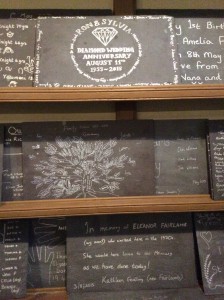
And high above, inscrutable, stands that immense eagle, hardly smaller than myself, surveying the transformational scene with a beady eye. In the meantime, Nicholls, a man with a passion for his job, is standing in.
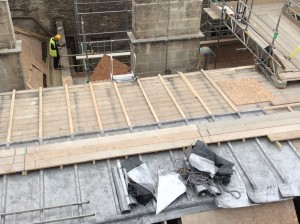
Home Thoughts
Reading yet another excellent blog from Municipal Dreams a few days after the return to government of an administration that threatens to extend the Right to Buy to housing association stock, led me to muse on the housing conundrum.
When I first wrote for the professional journals, in the late 1970s, there were dozens of exemplary local authority housing schemes up and down the country. As a freelance who didn’t mind leaving London, I was kept busy. In unexpected corners you might find a local authority with ambitions (I particularly remember Allerdale) or a long established architectural practice (I remember Johnston and Wright in Alnwick) whose ambitions were to design high quality, well considered rural housing. I wrote about Harriston in Cumbria, a rebuilt mining village near Cockermouth, and about infill housing in villages all over that county, but I also wrote about thoughtful schemes in Milton Keynes and, soon, about that admirable project, Ralph Erskine’s Byker redevelopment in Newcastle upon Tyne including Tom Collins House, a sheltered housing scheme (see picture)– at the top of which lived a retired lighterman whose days were brightened by his view of the action on the Tyne far below.
By the time I was architectural correspondent for the Observer in the early 1990s, there seemed little to write about in that field. I scarcely ever touched on housing, except when pointing out the divergent architectural paths of Terry Farrell and Nick Grimshaw, whose partnership had been responsible for an elegant aluminium clad tower block near Hanover Gate, 125 Park Road – built for a housing association (see below) – as well as a tile-clad terrace for the LB of Camden, Millman Street in Holborn. By then both were nearly twenty years old. The Right to Buy was already biting into the supply of desirable local authority stock and there was little new to report.
Another twenty years on, there is hardly an example of new local authority built housing stock to be found. Municipal Dreams found one, with mixed tenure. Squabbles over the use of balconies seemed the only wrinkle. It left me wondering how things were in those modest schemes in the north west, and reassured by how fine the Byker development – all listed – still seems, when I last visited quite recently. I hate to see all this becoming history, out of sight and out of mind.
Time for Outrage?
In 1955 young Ian Nairn took the incandescent fury of the ‘poles and wires’ campaign, begun by John Betjeman and the proprietor of the Architectural Press Hubert de Cronin Hastings (‘H d C’) and, adding a whole thesaurus of blights on the face of Britain, put it all into his own words. Laid out on the pages of the Architectural Review, blasted into life with the radical graphics and inimitable hand and eye of Gordon Cullen, the Outrage special issue woke up the nation. First came the AR readers, then those of the Daily Mail and its Fleet Street fellows, soon followed by the BBC audience and, incredibly, even the Duke of Edinburgh had used the word ‘subtopia’ – Nairn’s own word – in a speech. A movement to combat the national malaise, the mediocrity and mess of the built environment, was born.
Now the government promises a Select Committee on the Built Environment for the next term of parliament – whoever is in charge. For Nairn the outer edge of Southampton, the starting point for his illustrative journey, looked identical to the outer edge of Carlisle. He photographed both to make the point. Now the new housing in Banbury is the new housing in Chelmsford, while that around Southampton is no different to that around Carlisle. House builders, working exclusively for the private market, offer precisely what ‘the market’ wants, what people know is already available. It is an entirely circular process, in which supply and demand are identical.
So, time for someone fearless to rage against the second-rate, the imitative, the trite and to do so in words, images, graphics, on the page and online. To catch the eye and the ear and the imagination of the public. Committees of the self serving or even the well meaning will never manage to do it. This campaign needs to be ill mannered and foul mouthed, intense and melodramatic, even on occasion silly. But it must work. We have hit the nadir and the only way is up.
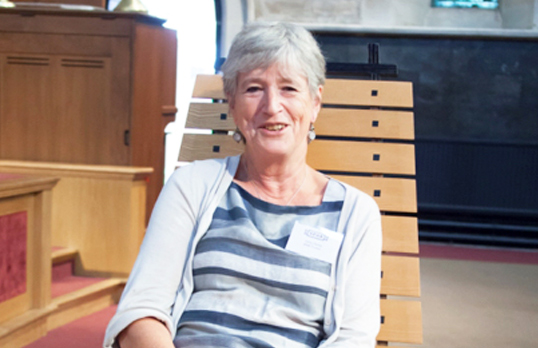

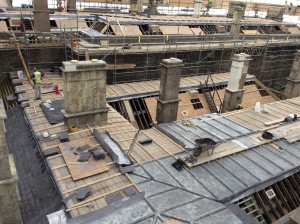
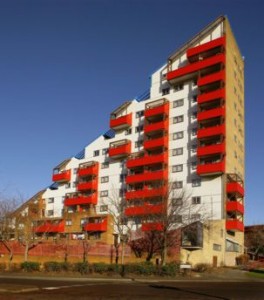


 @gilliandarley
@gilliandarley @gmdarley
@gmdarley Gillian Darley
Gillian Darley